🌵 Forage Crops
Important points related to Forage Crops.
Major Characteristics of an ideal fodder crop
- It is nutritious, easily palatable and digestible.
- Not injurious at the stage at which it is fed to animal.
- It should be quick growing and early maturing.
- It should give high yield of green fodder.
- It should give maximum number of cuttings and biomass.
- It should grow well with little tillage and care.
- It should be capable of preserving as hay or silage.

Berseem
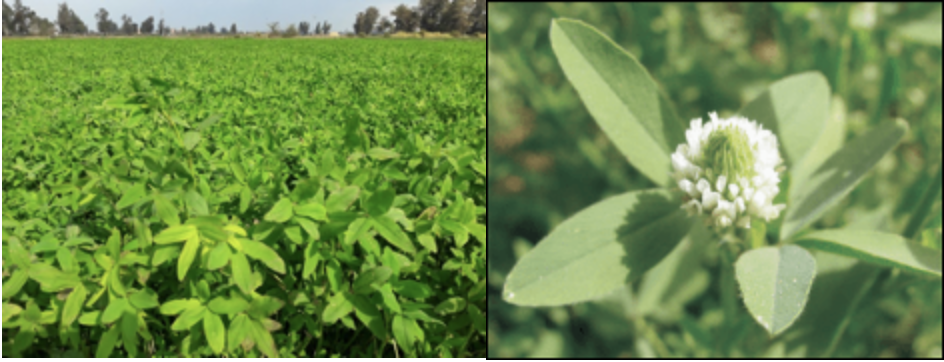
- Botanical name:
Trifolium alexandrinum - Family: Leguminoceae
- Origin: Egypt
- Also known as
King of Fodder Crops/Egyptian Cloverbeacuse of Egyptian origin. - Optimum temperature required: 18 - 22 °C
- Sowing time: October to November
- Sowing method: Broadcasting
- Seed rate:
25-30 kg/ha(Diploid varieties)35 kg/ha(Tetraploid varieties) - Ratio of mixing diploid and Tetraploid varieties: 1:1 and 2:1
- Seed treatment: By
Rhizobium trifoliumculture.
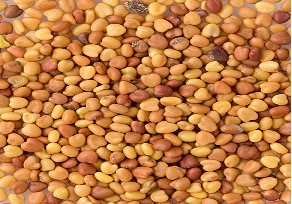
Variety
- (a) Diploid: Vardan, Chindwara, BL-1, 11, 22, 52, C-10 (Maskavi), IGFRI 99-1
- (b) Tetraploid: Pusa giant, T-528, 560, 678
Weeds
- Kasni (
Chicorium intybus– objectional weed), separated from berseem crop seed through 17 per cent salt solution.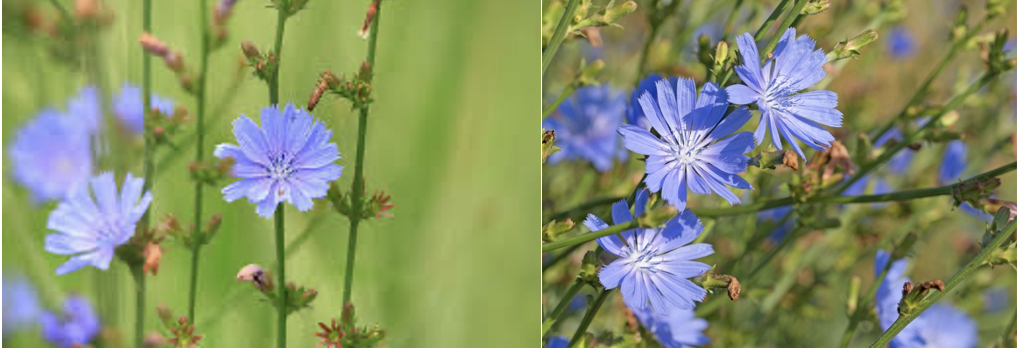
- NPK: 20 : 60 : 30 kg/ha
- Cutting: First cutting at 50-55 days after sowing and subsequent cutting is taken at 25-35 days after previous cutting
- Forage yield: 80 - 100 tonnes/ha
- Glucosides found:
Saponine
Lucerne/Alfalfa

- Botanical Name:
Medicago sativa - Family: Leguminosae
- Origin: South West Asia
- Also known as
Queen of Fodder Crops. - Optimum temperature required: 20 - 22 °C
- Sowing time: October
- Sowing method: Broadcasting
- Seed rate: 20 - 25 kg/ha
- Seed treatment: By
Rhizobium meliloticulture - Varieties: Moopa, Rambler, Anand-2, 3, Sirsa 1, 8, 9, Type - 8,9, NDRI – 1,2, IGFRI-5,54,244
- Weeds:
Cuscuta reflexa(Doddar/amarbel – parasitic weed) - NPK: 20-25:60-75:0-0 kg/ha
- Cutting: First cuing at 50-55 days after sowing and subsequent cuing is taken at 20-30 days after previous cutting
- Forage yield: 80 - 110 tonnes/ha
- Glucosides found:
Saponins - Physiological disorder:
Lucern yellowing(due to boron deficiency)
Oats

- Botanical Name:
Avena sativa - Family: Poaceae
- Origin: Asia minor
- Sowing time: Mid October to Mid-November
- Sowing method: Broadcasting
- Seed rate 100 - 120 kg/ha (for bold seeded) : 80 -90 kg/ha (for small seeded)
- Spacing: 20-25 cm (Plant to plant)
- Irrigation (No.): 3 - 4
- Varieties: Kent, Algerian, UPO 50, Craig, Afterlee, Fulgham, Fleming gold, HFO-114, Brunker-10, UPD-90 HFO 114 – Both for Fodder and grain purpose.
- Weeds: Kasni (Chicorium intybus)
- NPK: 80 : 30 : 20 kg/ha
- Best stage for harvesting: Dough stage
- Cuttings: 2-3 cuttings, cutting at 70-75 days after planting
- Fodder yield: 40 - 45 tonnes/ha
Napier Grass (Elephant Grass)
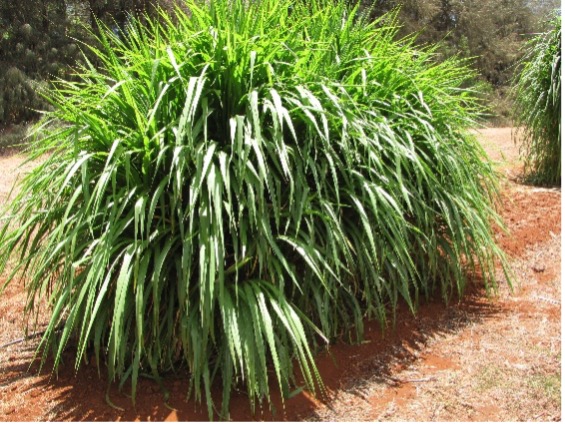
- Botanical Name: Pennisatum
purpuriam[PP] - Family: Poaceae
- Origin: Rhodesia (South Africa)
- Best soil: Loam soil
- Sowing time: October
- Sowing method: Broadcasting
- Seed rate: 33,000 – 40,000 rooted slips
- Spacing: 60 x 60
- Varieties: Pusa giant (Hybrid): (Pennisatum purpuriam x Pennisatum typhoideum) NB-5, 21, EB-4, Coimbatore, Yeshwant
- Pusa giant is a variety of
Papaya,BerseemandNapier grass. AFO-2021 - NPK: 40:30:20 kg/ha
- Cutting: First cutting at 70 days after planting and subsequent cutting is taken at 40-45 days intervals.
Fodder Sorghum/Chari
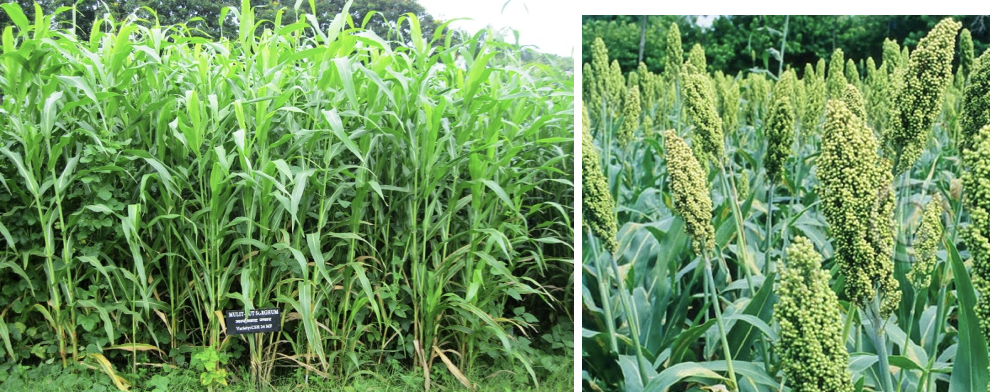
- Botanical name: Sorghum species
- Family: Poaceae
- Origin: Africa
- Optimum temperature required: 18 - 22 ºC
- Sowing time: North India – March to July, South India – February to November
- Seed rate: 40 - 50 kg/ha
- Spacing: 25 - 30 cm (Plant to plant)
- Varieties: JS-20, 29, 263, J3, Pusa chari, MP chari, Haryana chari, Dudhiya, Gwalior-82, 304, Vidisha 60-1, Ujjani 6, 8, CO-11, 18, 19
- NPK: 60:30:30 kg/ha
- Fodder yield: 50 - 70 tonnes/ha
- Chemical found:
Dhurin/HCN(higher concentration is found at 30-35 days age of plant and mostly in Summer sorghum crop)
Fodder Maize
- Botanical Name: Zea mays
- Family: Poaceae
- Origin: America
- Optimum temperature required: 18 - 22 ºC
- Sowing time: North India – April to August, South India – February to November
- Seed rate: 40 - 60 kg/ha (60-75 kg/ha for Hybrid variety)
- Spacing: 25 - 30 cm (Plant to plant)
- Irrigation (No.): 4-5 (1-2 for kharif)
- Mixed cropping with: Cowpea, greengram, blackgram, horse gram
- Varieties: Ganga 5, African tall, J-1006, Vijay, Manjari, Deccan
- NPK: 60:40:30 kg/ha
- Best stage for harvesting: Between 50 to 60 days of growth
- No. of cuttings: One
- Fodder yield: 35 – 45 tonnes/ha
Major Characteristics of an ideal fodder crop
- It is nutritious, easily palatable and digestible.
- Not injurious at the stage at which it is fed to animal.
- It should be quick growing and early maturing.
- It should give high yield of green fodder.
- It should give maximum number of cuttings and biomass.
- It should grow well with little tillage and care.
- It should be capable of preserving as hay or silage.

Berseem

- Botanical name:
Trifolium alexandrinum - Family: Leguminoceae
- Origin: Egypt
- Also known as
King of Fodder Crops/Egyptian Cloverbeacuse of Egyptian origin. - Optimum temperature required: 18 - 22 °C
- Sowing time: October to November
- Sowing method: Broadcasting
- Seed rate:
25-30 kg/ha(Diploid varieties)35 kg/ha(Tetraploid varieties) - Ratio of mixing diploid and Tetraploid varieties: …
Become Successful With AgriDots
Learn the essential skills for getting a seat in the Exam with
🦄 You are a pro member!
Only use this page if purchasing a gift or enterprise account
Plan
Rs
- Unlimited access to PRO courses
- Quizzes with hand-picked meme prizes
- Invite to private Discord chat
- Free Sticker emailed
Lifetime
Rs
1,499
once
- All PRO-tier benefits
- Single payment, lifetime access
- 4,200 bonus xp points
- Next Level
T-shirt shipped worldwide

Yo! You just found a 20% discount using 👉 EASTEREGG

High-quality fitted cotton shirt produced by Next Level Apparel